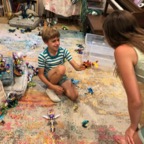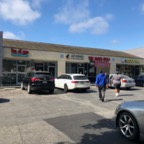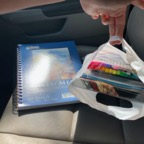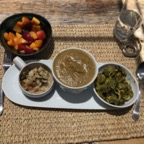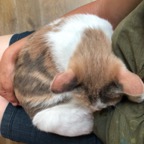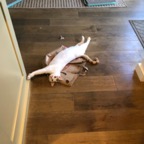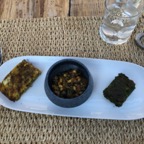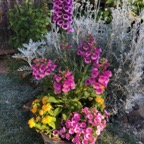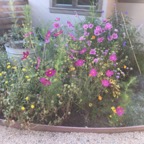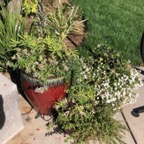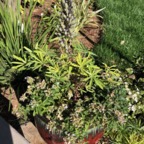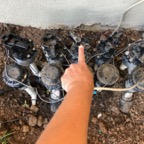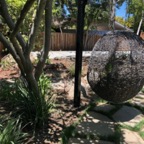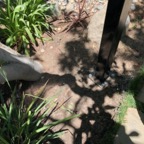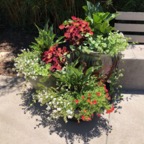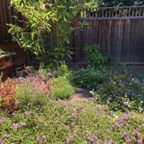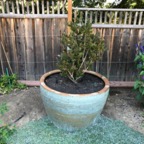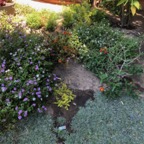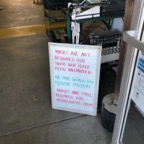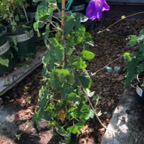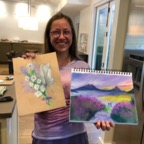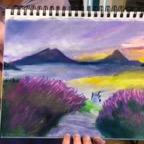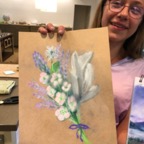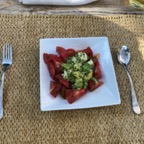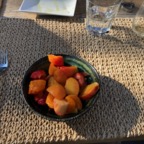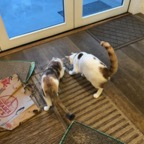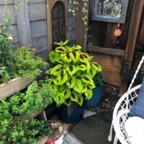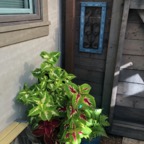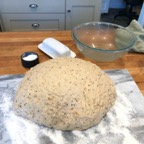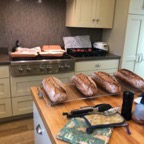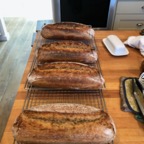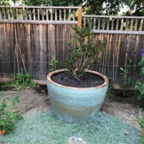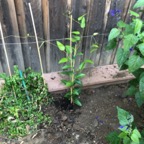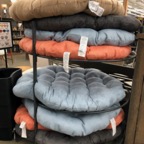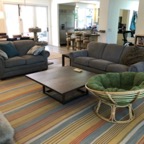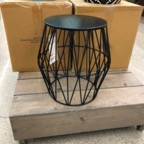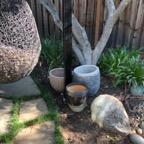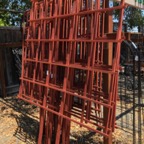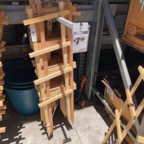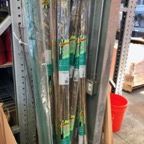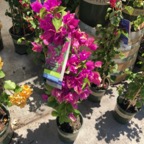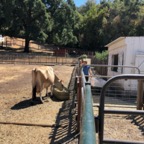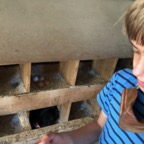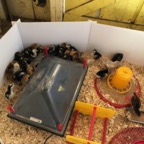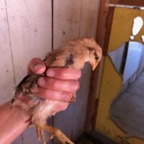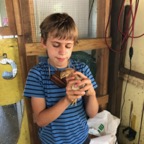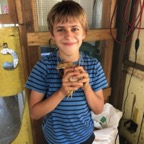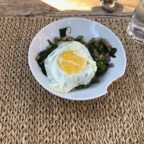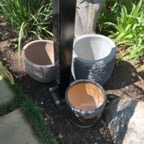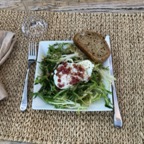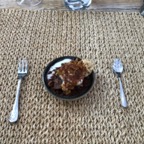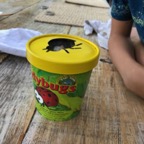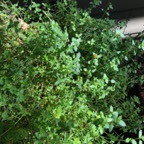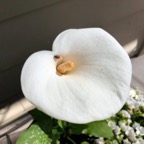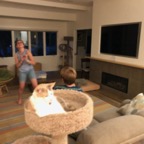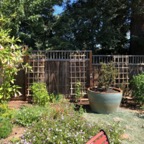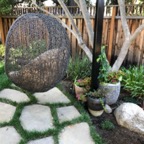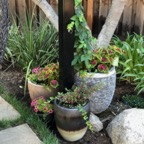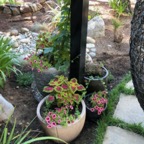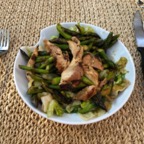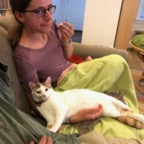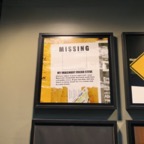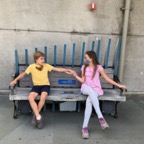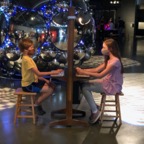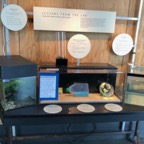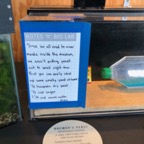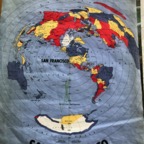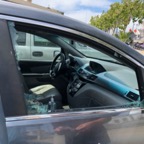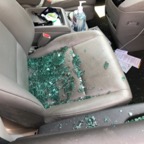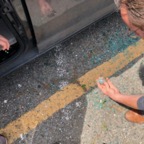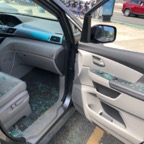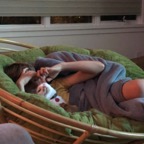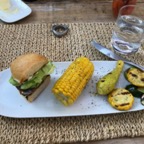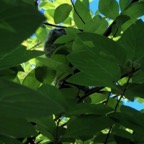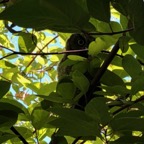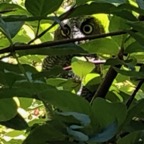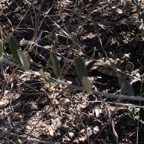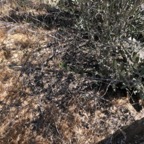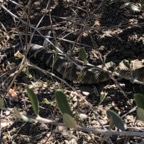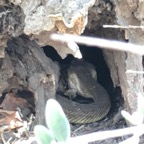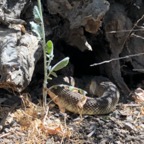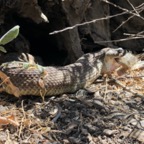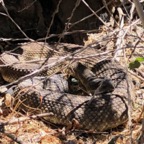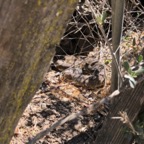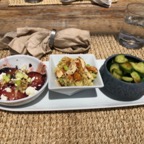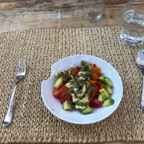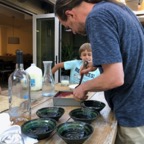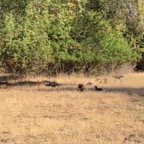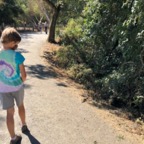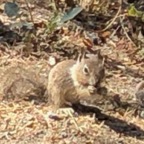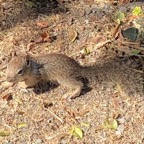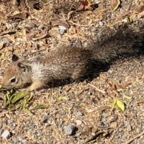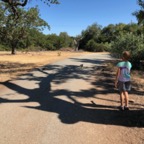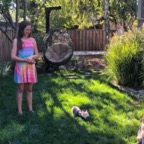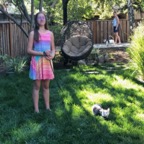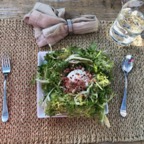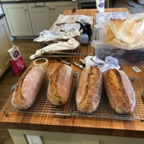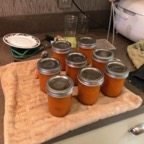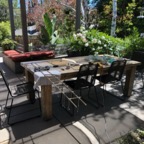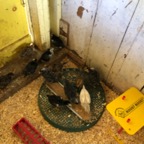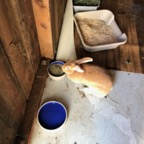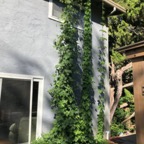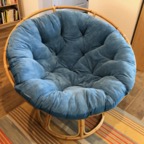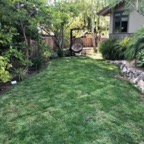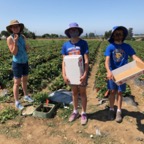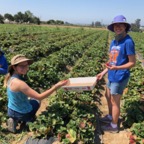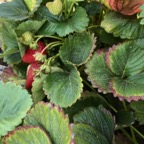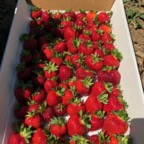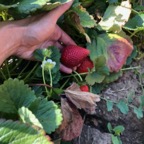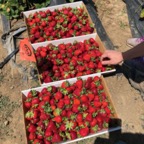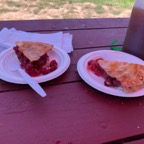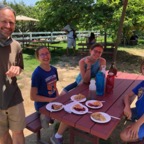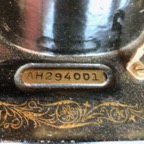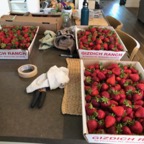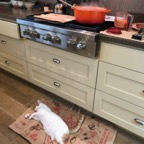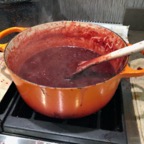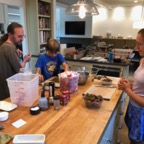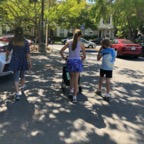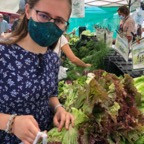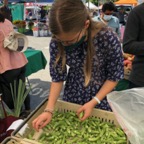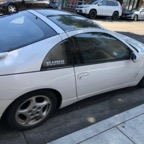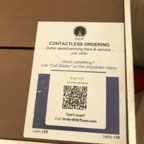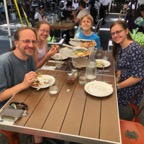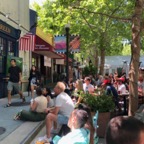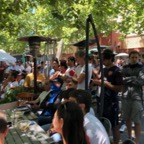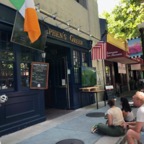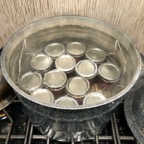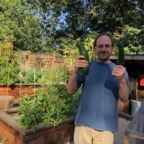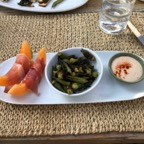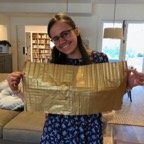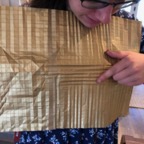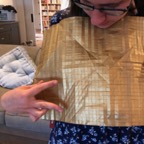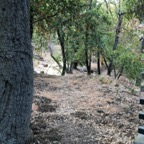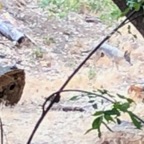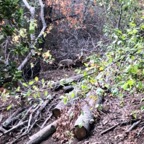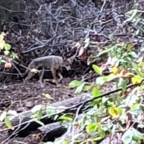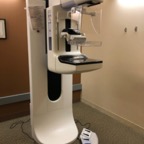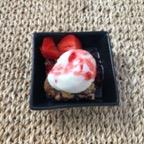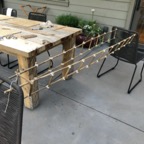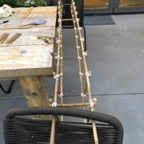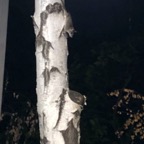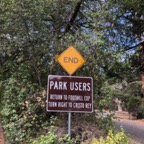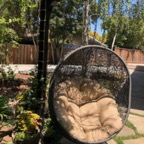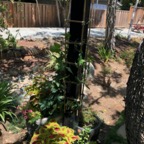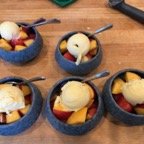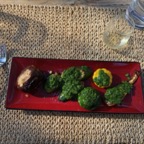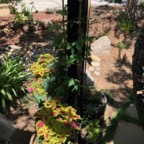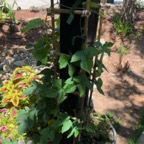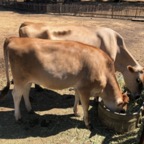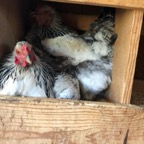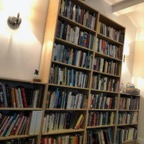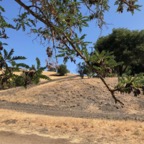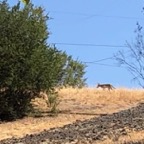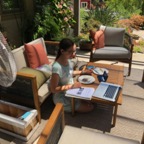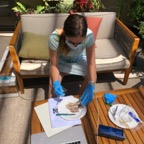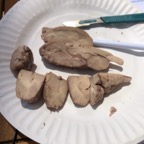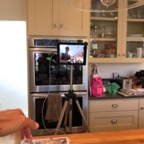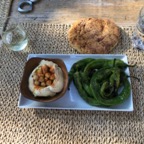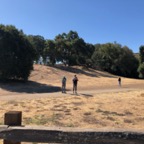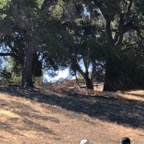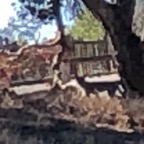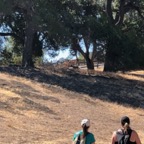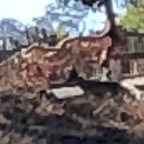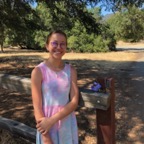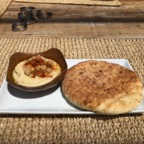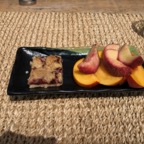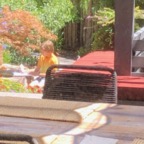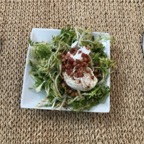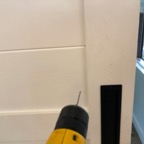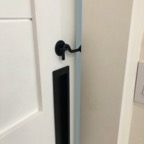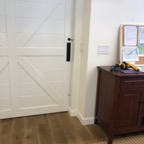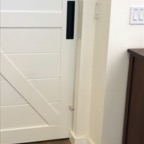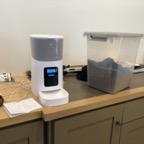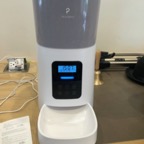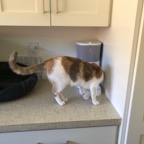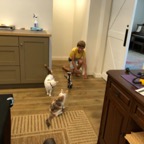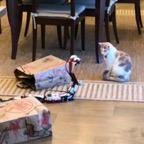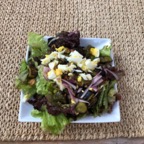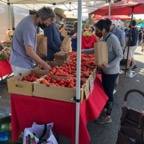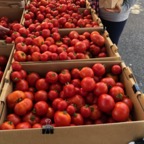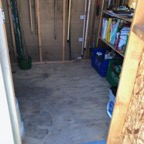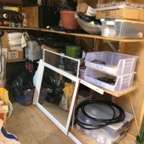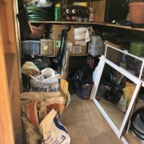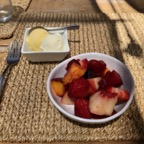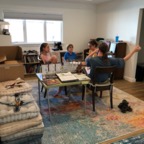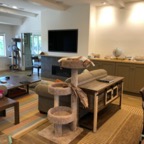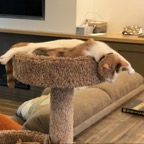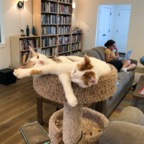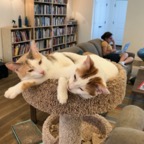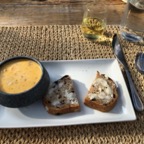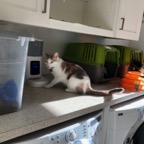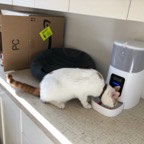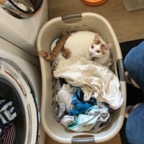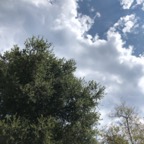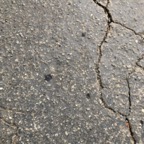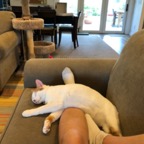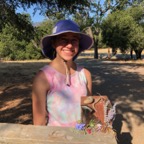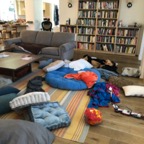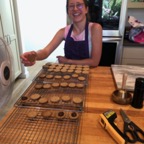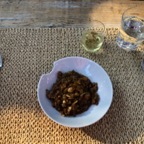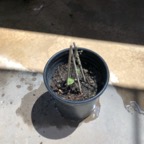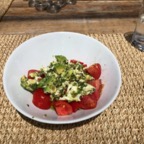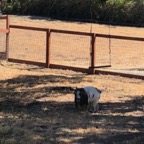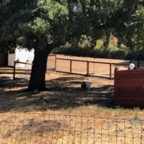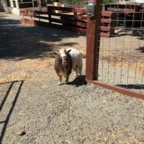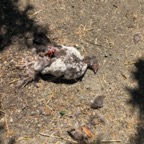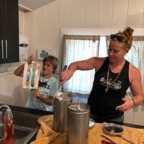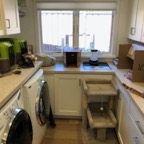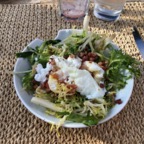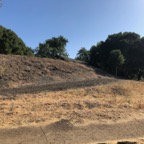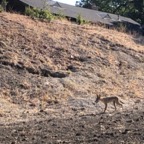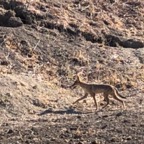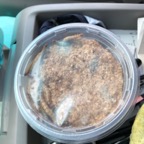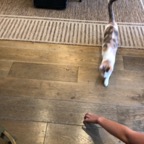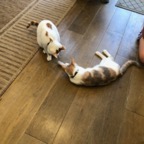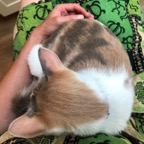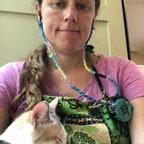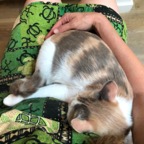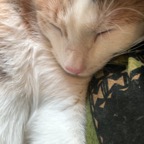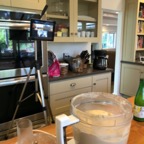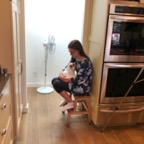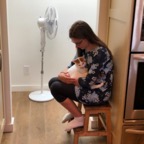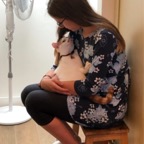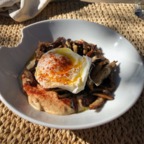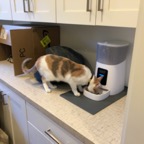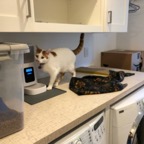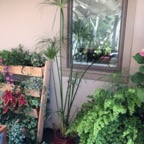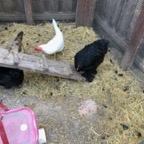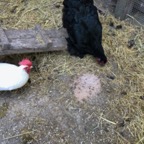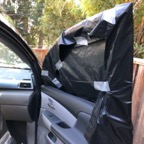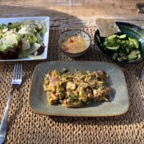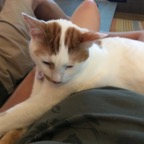Late June to July
After Grandpa Mark’s visit, we had a long stretch at home – four weeks, the heart of the summer.
We spent these weeks at home. This is our second summer without an international trip, due to the pandemic, and back in the ‘before times’ we’d planned to do a bunch of travel during these summers when the kids are at such great ages for travel (ages 9 to 14 in 2020, and 10 to 15 in 2021). Greece and Japan were at the top of our list. But we’re trying to be philosophical about the inability to travel: the ENTIRE WORLD was pretty well shut down, with ever-changing border closures and entrance requirements, and Owen was still not vaccinated, and hospital facilities in different countries were uneven… so the risk and uncertainty still tipped the balance into the “don’t travel yet” category. But it was still frustrating.
We planned a domestic trip instead: two weeks in Boston. We’d spend a week in Boston itself, visiting sights related to the American Revolution, then a week in Concord with my sister, Leslie, visiting with family and seeing sights outside of Boston. That is one unexpected benefit of the pandemic: it led us to refocus some of our travel energy domestically, because there’s a huge amount to see and learn and discover inside the U.S. too.
Ellie and Lela did two camps during this time: Ellie did a weeklong sketching camp which she loved. She learned some good new techniques and made some beautiful drawings!
Lela had a neurobiology camp, in which she learned about the brain and its structures, and this camp culminated in the dissection of a sheep brain. The brain was mailed to us, along with scalpels and a bunch of other dissection tools (it was interesting to be on the receiving end of THAT package). Lela enjoyed this experience very much.
We also did a number of day trips in late June and July: we went to Gizdich Ranch outside Watsonville to pick strawberries and enjoy some pie. We came home with a lot of strawberries, so we ate lots of fresh strawberries, baked strawberry desserts, and made our year’s worth of strawberry jam.
Early July is also apricot season! There are a few orchards of Blenheim apricots here in Santa Clara Valley – there used to be many more but they were replaced by more conventional varieties that have a longer season and travel better. Blenheim’s, however, are incredibly good, with amazing apricot flavor. They make superb jam. Their season is very brief, though, only 3 weeks in early to mid-July. So when they appear I switch into apricot gear, stopping everything else, and buy several dozen pounds of sort-out apricots and turn them into a year’s worth of apricot jam.
We also went up to the Exploratorium in San Francisco for the first time since the pandemic! We got timed tickets. It was good to be back, and see the new exhibits, and just be up in the city.
We spent some time up in the map room at the end. I really enjoyed this, especially a map of the world with San Francisco at the center. Not because I think San Francisco is at the center of the world, but because it really helps show the distances that are relevant to us on the West Coast: the vast size of the Pacific Ocean, the smaller size of the Atlantic Ocean, and just how close Canada, Alaska, Russia, and Scandinavia are to each other, around what is really rather a small Arctic Sea. This helps me visualize things that I know: a plane trip to England goes over Canada, Greenland, and Scotland; reindeer or caribou are found in the far north on both continents and migrate southward every year; people crossed a land bridge from Siberia into Alaska thousands of years ago; the Pacific is ginormous, big enough to put all the continents in it; I can see how Leif Erikson could take a relatively small boat from Scandinavia, to Iceland, to Greenland, then to Newfoundland; and Australia is really, really far away – much farther from California than England is; I can see why we have missiles in Nebraska; and you can draw an almost straight line from Singapore to South America, passing right over the pole.
The Exploratorium trip had an unfortunate aftermath, however, as when we returned to our car we found the front passenger side window smashed. We’d parked in an open lot, right on the Embarcadero, about two blocks from the Exploratorium. This is a very public area with lots of pedestrians – this was not a back alley where a thief could operate unnoticed. Presumably dozens of people saw this happen, yet there were no consequences that we could see.
We expect that the thief just attempted a smash-and-grab, and was probably at our car for less than five seconds, but still, it was in the middle of the day with people walking past nearby. He opened the glove compartment and maybe the central console, but we don’t keep anything interesting in there – just lots of Tampax hahaha. We did have a charging cable hanging out of the glove box, which may have been what made our car a target. But there was no phone on the charging cable, which I’d think would indicate that there wasn’t a phone in the car at that time, but then thieves don’t become thieves if they’re skilled at deductive reasoning.
Thankfully, nothing was taken. We don’t carry much of value in our car. Both girls had brought iPads on this trip (which is presumably what the thief was after – small portable electronics) but one was hidden in the back pocket of the far back seat, and the other I’d hidden under our bin of dirty farm boots in the trunk. The thief wasn’t able to find those in a four second examination from the front passenger side, so we didn’t lose anything.
Interestingly, the car next to ours also had a window smashed – the back left. Then the back seat had been pulled forward, opening a passage into the trunk. He probably felt around there for a couple seconds, then moved on. So it looks like the thief went between our cars and did two smash-and-grabs, one left and one right, meaning the thief felt comfortable enough making two loud bang-and-shatter noises in broad daylight. Interesting.
It took us a while to get the broken glass out of the car. It was all over the passenger seat, the footwell, the central console, and the door handles, and there was some in the middle seat as well. We scooped it out, then carefully brushed away the splinters. The door rattled as we closed it – the glass was broken down into the door, too, so a bunch of pieces were rattling around inside.
I didn’t want to sit (with shorts) in that front passenger seat, so I sat in the one behind. The trip back was certainly loud, and windy, as we were traveling on the highway with no passenger window. I kept my sunglasses on the whole time in case any fragments of glass flew back from the front window into my face. (Cue the story about an oncoming car hitting our driver’s side rear-view mirror in France at a very narrow point of our road. I was sitting in the left back seat and pieces of our mirror flew backwards and hit me in the face. Thankfully I wasn’t cut, but thanks to that experience I was aware of the danger).
Getting that window replaced turned into a multi-week saga, as the dealer didn’t have any in stock, and shipments were very slow. That experience rather changed our view towards car break-ins. We’d rather not carry anything of value at all and just leave the car unlocked (with a sign saying something to that effect) just to avoid the hassle and expense of getting a window replaced. At the very least we know to tuck the charging cable into the glove compartment.
Anyway, we were lucky that it wasn’t worse – one window broken and nothing stolen.
We did multiple walks and hikes up into Rancho during this month, and on one memorable walk Lela saw a rattlesnake, eating a baby ground squirrel! This was very exciting, so we stopped to watch the whole thing.
I also saw a coyote down in the lower part of the park, in the meadow and around the creek. I saw it multiple times, sometimes every few days, which was fun. It was living and hunting in that area for a while.
The presence of a coyote in that part of the park allowed me to hone my skills at listening to antipredator calls, because often I’d be alerted to the presence of a possible predator by hearing bird or squirrel alarm calls. I realized that these calls happen in kind of a ‘half sphere’ shape with the predator at the center. The species that are alarm calling, and the size of this sphere, and whether it is moving or not, give you an indication of the size and type of predator.
Squirrels alarm call at coyotes, but so do other birds, and most tellingly – so do hawks. So if a hawk is alarm calling, you know the predator is something big, something big enough to make a hawk take notice, which means a coyote or larger. A coyote trotting through the landscape will generate a very large half-sphere of alarm calls, with new callers vocalizing as they see the coyote pass. Some of these calls depend on line-of-sight, so if the coyote is down in the creek bed the sphere of alarm calls will be smaller than if it is out in the open. So, if you listen carefully, you can hear the sphere moving through the landscape, which indicates the probable location, speed and direction of the coyote, which can all be used to spot it yourself.
Bird alarm calls in trees often indicate a perched raptor or other threatening bird, like a raven, or sometimes even a jay. The potential prey birds – crows, jays, etc. -- call and may dive bomb the predator, which is pretty easy to see as it involves sharp movements. You can focus in at the bottom of the dive-bomb “U” shape trajectories to see if you can spot the predator. Hawks in flight will also be mobbed, by small birds all the way up to crows. Those are definitely easy to see.
A small alarm-call sphere in a tree, of very small birds, may indicate a very small, perched predator. On one of my walks I heard some tiny, high pitched chirping, and a small disturbance about seven feet up in a large bush. The sphere of activity was quite small, only a few feet in diameter. I peered into the center of the activity, and was startled to see… a baby owl! It was perched in there, getting harassed by some kinglets and other tiny birds. I’d never seen a wild owl so close before – it was only about five feet away!
Tail flagging by ground squirrels, which I have occasionally seen in the wild (!), indicates a snake of course, either currently present or encountered in the recent past. I’ve seen a couple of these encounters occurring naturally.
A shrill, sharp, sudden whistle -- often by a squirrel – often means a swooping hawk, or a coyote that suddenly became visible. There’s urgency on the part of the potential prey that is higher than when they are watching a stationary, probably-not-hunting predator. Urgency, sometimes followed by silence, because the predator is so close.
One morning I remember hearing a shrill whistle while I was crossing the lower bridge, followed by another whistle a few yards away. That indicated a fast-moving moving predator, moving from one whistler’s line of sight to the next one’s. I stopped, oriented to the whistles, estimating a trajectory between those two points and extending beyond the second caller, and saw a red-shouldered hawk overtop a 6-foot fence and swoop through the trees to perch on a branch just ten yards from me. Very satisfying. I knew it was there before I saw it.
And, thanks to the coyote hanging out in the lower meadow, I got good and figuring out where it was by listening to the calls. I spied it crossing a meadow, and up on a ridge, and down in the creek, and trotting through the trees, all on different days, usually alerted to its presence by the alarm calls that it triggered.
In other news, I cooked with Leslie over Zoom this month! We’ve been doing these cooking sessions every month or two. I send her a good recipe, then we both get ingredients and prep them, then we spend an hour on Zoom cooking together. It’s a lot of fun and a good opportunity to talk. This month we made hummus from the Zahav cookbook, my favorite recipe for hummus.
Later in the month we set up another cooking Zoom call, this time with Jason in South Korea as well as Leslie! We set it for 4 p.m., which would be 8 a.m. his time and 7 p.m. Leslie’s time. I made the same recipe with both of them. It was a surprise present for him (Leslie worked out the schedule, Becca got the supplies). I decided on a simplified version using a hybrid of my usual Zahav recipe, and a 5 minute Zahav recipe, as Jason is a less experienced cook. It went very well. At one point I had him crush the garlic with a can, and I crushed mine with a can too so we’d be doing exactly the same thing! The hummus turned out well and I was delighted to make a connection with Jason.
Mike ran a new D&D session with the three kids this summer, too. He’s had a multi-year campaign running with Lela, Londyn, and Sydney, but that one waned a bit during the pandemic. Ellie has wanted to join, and Owen is now old enough, that the three of them could do a campaign together as well, so Mike guided Ellie and Owen through the set-up process and ran a one-off this July.
We did a bunch of home and garden improvement projects during this month as well. I researched and got a new papasan cushion for our papasan chair, as our old one was almost totally flat, with no stuffing in the middle anymore, so it was pretty uncomfortable. I got a new blue one.
The garden came along nicely during this time as well. The landscapers put the pole in, which was the last step in the project, and we hung the egg chair from it! We were delighted to see our idea become real at last. The final result was exactly what we’d hope it would be: a quiet, shady retreat in the backyard, where you could sit and rock gently in the breeze while you read a book, listened to music, or took a nap. All of us would make use of this quiet sanctuary at times.
To make the hanging-chair area more of a ‘place,’ or ‘destination,’ and to soften the lines of the square black pole, I decided to put a bunch of containers around the base. I spent some time researching this and picking out just the right ones: earth tones, with mixed materials to reflect that corner of the garden. One was made of pieces of slate which matched the nearby river rock area, another was a warm brown which matched the flagstones, and a third was a mixture of slate and warm brown which tied the other two pots and the rest of the surroundings together.
To soften the look of the black pole, I decided I wanted to train a vine up it, so I did a lot of research on vines that would grow well in our climate and could grow in the shade. This limited the list quite a bit, but after much research and many trips to the garden store I decided on a morning glory. This is a beautiful green vine with fig-tree-shaped leaves, and lovely purple flowers. Morning glories have the reputation of being a bit of a thug in the garden, but I figured that we needed a tough, resilient plant to survive in our heat and drought.
So I planted a morning glory in the biggest pot by the pole, and filled the others with a collection of pink plants: pink-and-green coleus, pink calibrachoa, and pink mini fuchsia, for an overall pink-and green effect. I thought that would warm up that corner and make it bright and cheerful as the rest of the plants in that area were foliage plants.
It became apparent that the morning glory would need some sort of trellis to climb up. So I researched different kinds of trellises, on Etsy and at Home Depot and the garden stores, but didn’t find a trellis that was as tall and narrow as I needed. I thought of getting a wider one and cutting it to fit, but that seemed wasteful. Finally, I decided to make my OWN trellis, out of narrow bamboo poles (about the thickness of a pen). I taught myself to make a good lashing – I used a knot called the ‘Japanese Mark III lashing’ which is used to connect poles and logs together in a secure way that does not slip. And slowly, over multiple days, I made three ladder-shaped panels to cover three sides of the pole (back and two sides), then lashed these together. I was very proud of my trellis when I was done: it’s lightweight, esthetically pleasing, and will be easy for the vine to climb.
Lastly, I got a metal table to go next to the hanging chair, which could double as a stool, so one person could put a book or drink on the table, or a second person could sit there.
While I was doing all this research on vines I realized that we could use vines to cover the back fence behind the crepe myrtle, across from Ellie’s window. That’s a bare fence behind the shade garden. So I got four different shade loving vines and planted them in the ground by the fence, then put (wide, store-bought) trellises up behind them. The type of vine I got was supposed to bloom in the winter, so I hoped that it would provide color at a time when the rest of the garden was mostly green and scraggly.
Towards the end of this month, we had to finalize our preparations for leaving the cats for two weeks while we went to Boston. We’d got them in January and hadn’t taken any overnight trips since then (which was a nice long span to get them established). But we had to figure out how to get them cared for while we were gone to Boston.
One big problem was where and how to confine them in the house. Normally they have almost the full run of the house during the day, while we can supervise them, then we confine them to the laundry room at night to keep them out of trouble. But confining them to the laundry room for two weeks seemed excessive, but we didn’t want them to have the whole run of the house, either.
However, keeping them in the family room, behind the barn door, was a reasonable possibility. Which raised the question: how should we close the barn door? I researched this for months, looking at door wedges, sliding door locks, clamps that sat on the rail, and many other options. The problem was made more complicated by the fact that the door basically hangs from a rail, and when it is closed it’s just hanging there – no latch. And it doesn’t abut the wall when it is closed, it passes behind a part of the door opening. So the geometry was challenging.
In addition to that, we wanted any lock to be secure for the cats while we were gone, but we also didn’t want a lock on that door which might present a danger in case of fire the rest of the time. It needed to be easy to open from the other side so nobody would be trapped. Less importantly, but still a consideration, was that we wanted the solution to be attractive. A big clunky or ugly lock wasn’t really in the cards.
In the end, after much research, we decided on a 6 inch black iron hook and eye. We’d screw the eye into the door, right over the handle (which was also black iron), and the hook would be screwed into the doorframe on the family room side, so that it would be invisible from the living room when not in use. The hardware matched the existing hardware of the barn door. We held it in positon and had each kid open it from both sides to make sure they could do it easily. This was not supposed to be an anti-person lock, just anti-cat!
It was hard to plug in the drill and actually drill a hole in the house – what if we made a mistake?? But we measured multiple times, and I got black metal screws which would blend in with the hardware, and I drilled a pilot hole then we screwed the eye into the door. Thankfully, it looked good. Then we did the same for the hook. And there we had it, simple, attractive solution for $9. The cats could have safe access to the laundry room and family room for 24 hours a day while we were gone.
The second problem was finding someone to feed them and empty the litter box. After much thought, we approached Manya, who got along very well with our cats. She was delighted to fed them for us, so we hired her for the two weeks we were gone.
The last problem was that we usually fed the cats twice a day, but I was only having Manya come by once a day as that was less of a chore. So I got an automatic feeder which would dispense a little food on a timed schedule. I figured out a reasonable schedule and programmed it. The unit even let us record a message to tell the cats to come, so I recorded our brass bell, which was their food signal (an homage to Pavlov).
We also moved one of our security cameras to the cats’ room so we could keep an eye on them.
And with these solutions, we had figured out how to leave our kitties and go on vacation!

